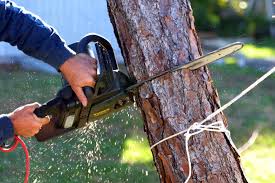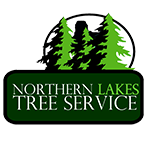Selective logging and cutting in Spokane country and Spokane areas
Short-term impressions, but long-term paybacks: selective logging and cutting in Spokane country and Spokane areas.
Spokane Country is known for its numerous tree preservation programs. Some Spokane areas have their own free tree program, which involves discussing how to take care of Spokane trees that get along with soil preservation. In this case, residents will be much more aware of how to preserve trees and soil for ecological units.
Will it be worth the cutting and selective logging?

Ecological units are life-care structures. For instance, cutting down massive ranges of forest trees lessens oxygen in the air, drys up the climate, develops corrosion, lessens the number of predators like lions, wolves, and sharks, and brings growth to the population of smaller predators, which can cause major economic and social problems. Excluding parts of the rainforests that are home to two-thirds of all the living animal and plant species on Earth will possibly not only modify the ecological unit’s biodiversity but likewise influence the environment vividly. In some cases, ecological units are also well maintained for future generations.
Preserving ecosystems secures the very existence of every animal and plant species on Mother Earth. The natural world comprises numerous multifaceted relationships among different ecological units. Creatures affect one another and occur in an ecological unit created by nature’s balance.
I think you already have the answer; will it be worth it? But let us not close our minds to the advantages and disadvantages of selective logging.
Selective logging degrades tropical forests. Logging operations vary in timing, location, and intensity. Evidence of this land use is rapidly obscured by forest regeneration and ongoing deforestation, but most selective logging permits ecological units to maintain more wildlife and allows forests to preserve some of their resistance to disease and pests. In addition, studies show that carbon uptake levels will rapidly recover if selective logging is done in due course. Some of the disadvantages are that some species may not recover quickly, and weakening the forest may lead to increased damage from ice, storms, or fires.
One of the biggest benefits of selective logging is that the overall ecological impact on the forest is reduced. Although the process is aggressive, a selectively cut forest is able to upkeep many more species than a clear-cut forest. In addition, clearing a forest leaves it much more susceptible to disease than selectively cutting it. In some areas, cutting back old-growth trees may leave room for new species that are able to cope with shade better than the original trees.
Many foresters say this type of selective logging is a key to the thick overgrowth that makes Spokane countries’ forests prone to disease and damaging wildfires. As per research, forests regain most of their capacity to take in carbon dioxide soon after they are selectively cut.
Process
In selective logging, each tree must be independently evaluated to determine whether it will be cut, left, measured, tallied, or cleared. The most significant issue used to regulate what trees get reaped is economics. Other factors closely analyzed include rate of growth, the probability of future growth, the health and class of a tree, spacing, and species type.
Trees selected for reaping are then cut at specific intervals. The trees harvested can either be individual trees distributed throughout the stand or small pockets of trees grouped together. Trees are spread out, thinned, or cleared in such a way that sufficient sunlight can reach ground level and permit the natural restoration of preferred tree species to take place.
As per the studies conducted, there were three types of selective logging:
Types
Single tree selection is when new stage classes of trees are introduced by the removal of individual trees of all size classes more or less consistently throughout the stand. A genuine selection system, however, will always aim to expand and preserve the health and quality of a forest by eliminating the weakest and worst trees first.
Group selection is when trees are removed in clear groups at a width no less than two times the height of adjacent mature trees. This system can be used for both even-aged and uneven-aged stands or for converting an even-aged stand to an uneven-aged stand.
Strip selection is an alteration of group selection in which thin strips with a width of less than two times the height of adjacent growing trees are increasingly cut into long, lined strips throughout the stand.
Having these ideas will clearly educate us that selective logging will not just harm our forest but instead will help us to redevelop and regain more of it. Protecting it will be more beneficial for us, especially for the wildlife.
With the due process and types of selective logging, one thing is for sure: it should be done by professionals only to avoid degradation of the ecological units that might cause the habitats of wildlife to be eradicated. Spokane country and areas should be preserved with proper handling and care.
Looking for a team that will surely help you in Spokane and other areas?
Call 1-877-905-TREE or (208) 443-3600, or visit the Northern Lakes Tree Service website at https://northernlakestreeservice.com/.
